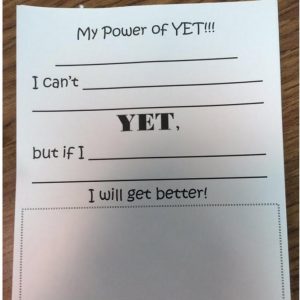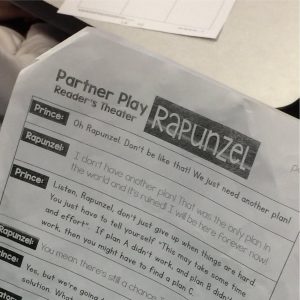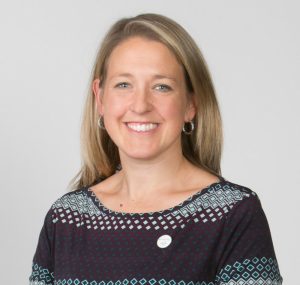 For the past two years, Loon Lake Elementary, where I teach, has really been trying to elicit a growth mindset in our students. We remind them we can always get better at something, and we need to work hard and not give up. We have been focusing on this in cross-grade-level monthly meetings, called Teams, as well as in individual classrooms.
For the past two years, Loon Lake Elementary, where I teach, has really been trying to elicit a growth mindset in our students. We remind them we can always get better at something, and we need to work hard and not give up. We have been focusing on this in cross-grade-level monthly meetings, called Teams, as well as in individual classrooms.
Having a growth mindset carries over into all aspects of the classroom. Knowing that, here are a few of the growth mindset tools my kids have been exploring this year.
The Power of “Yet”
The word yet is a little easier for my kindergarten students to understand than the phrase growth mindset. When my students say they cannot do something, we always add on the word yet. We then talk about what we can do to get better. This really hits home with them.
We completed a sheet (posted above) about something they cannot do–yet–and what they could do to practice and get better. This elicited some great discussions about, for example, how they might not be able to read a certain book, but that they can read some things. And if they keep working on reading strategies, they will get there.
Class Dojo also has some wonderful videos that open up a great dialogue about having a growth versus fixed mindset. One in particular is about the character Mojo, who wants to give up at school because he isn’t “good” at it. The video chronicles how Mojo’s friends help him learn that in school you can’t give up when you don’t succeed the first, second, or third time.
STEM Lessons
A favorite lesson by all has been “Save Fred.” Fred is a gummy worm whose boat (a small plastic cup) has capsized with his lifejacket (a gummy lifesaver) stuck underneath it. The students are not allowed to use hands but are provided several paperclips to save Fred by getting his lifejacket on.
This lesson really drove home the importance of persevering. Students were extremely frustrated they couldn’t use hands and that the gummy worm was larger than the hole in the lifesaver. They had to keep trying. They also had to learn to work together and communicate ideas well.
We also tried the “Marshmallow Tower” challenge, where they were given twenty spaghetti noodles, one yard of masking tape, one yard of string, scissors, and one large marshmallow. Student groups were asked to create the tallest tower to support the marshmallow at the top of the tower within a time limit of eighteen minutes. This was even more challenging than saving Fred. But we noticed that, with encouragement, students did not give up. However, they were extremely frustrated when towers fell repeatedly.
We decided to bring home the point that while you need to try again, you may need to change up your approach. We also wanted to encourage all group members to participate. So we revisited this same lesson, with the addition of straws and pipe cleaners. We started off discussing what students noticed had or hadn’t worked the first time around. We also talked about how to include everyone. Then we showed students the new materials and challenged them again. They were very excited about the addition of the new materials and came up with creative towers and new ideas. Additionally, they stopped to plan first and gain ideas from all group members, instead of one person trying to take charge.
Lessons from Theatre
My kindergartners, along with our Second Grade Buddy Class, worked on a growth mindset Reader’s Theatre about Rapunzel, created by Whimsy Workshop. The storyline is about how the Prince comes to save Rapunzel, but when he says let down your hair, Rapunzel has just cut it off. The play reveals how they don’t give up, and that they try other ideas to save Rapunzel. The students loved performing for others, as well as the followup STEM challenge of creating a way to save Rapunzel. This further brought home the point that even if you don’t create something that works the first time, you should tweak it and try again.
Try Everything
I know that this isn’t something we can do all of the time. But if we encourage students to have a growth mindset and keep trying, they’ll be more likely to succeed and enjoy school. If students aren’t succeeding and want to give up, that is when we really need to bring them back to having a growth mindset.
Finally, remind them it’s OK to fail! A wonderful book I recently read and highly recommend, Rosie Revere Engineer, by Andrea Beaty, has a great line: The only true failure can come if you quit. Now more than ever we need to bring that home to our students!
 Tricia Ziegler (Twitter: @axf96; blog: http://kindergartentreasures.blogspot.com/) is a kindergarten teacher at Loon Lake Elementary, in the Walled Lake School District. She is a part of the Walled Lake iCouncil (Instructional Council) team and is part of starting a coding club at her school this year. She is in her eleventh year of teaching, with nine in kindergarten and two in Second Grade. Prior to that she taught in the Walled Lake Great Start Readiness Program, which is a state-funded preschool program for at-risk students. Tricia attended Michigan State University for her undergraduate degree and specialization in Early Childhood. She then attended Wayne State University for her Master’s in Teacher Education.
Tricia Ziegler (Twitter: @axf96; blog: http://kindergartentreasures.blogspot.com/) is a kindergarten teacher at Loon Lake Elementary, in the Walled Lake School District. She is a part of the Walled Lake iCouncil (Instructional Council) team and is part of starting a coding club at her school this year. She is in her eleventh year of teaching, with nine in kindergarten and two in Second Grade. Prior to that she taught in the Walled Lake Great Start Readiness Program, which is a state-funded preschool program for at-risk students. Tricia attended Michigan State University for her undergraduate degree and specialization in Early Childhood. She then attended Wayne State University for her Master’s in Teacher Education.


 A few weeks ago I wrote about
A few weeks ago I wrote about  Hattie Maguire (
Hattie Maguire (